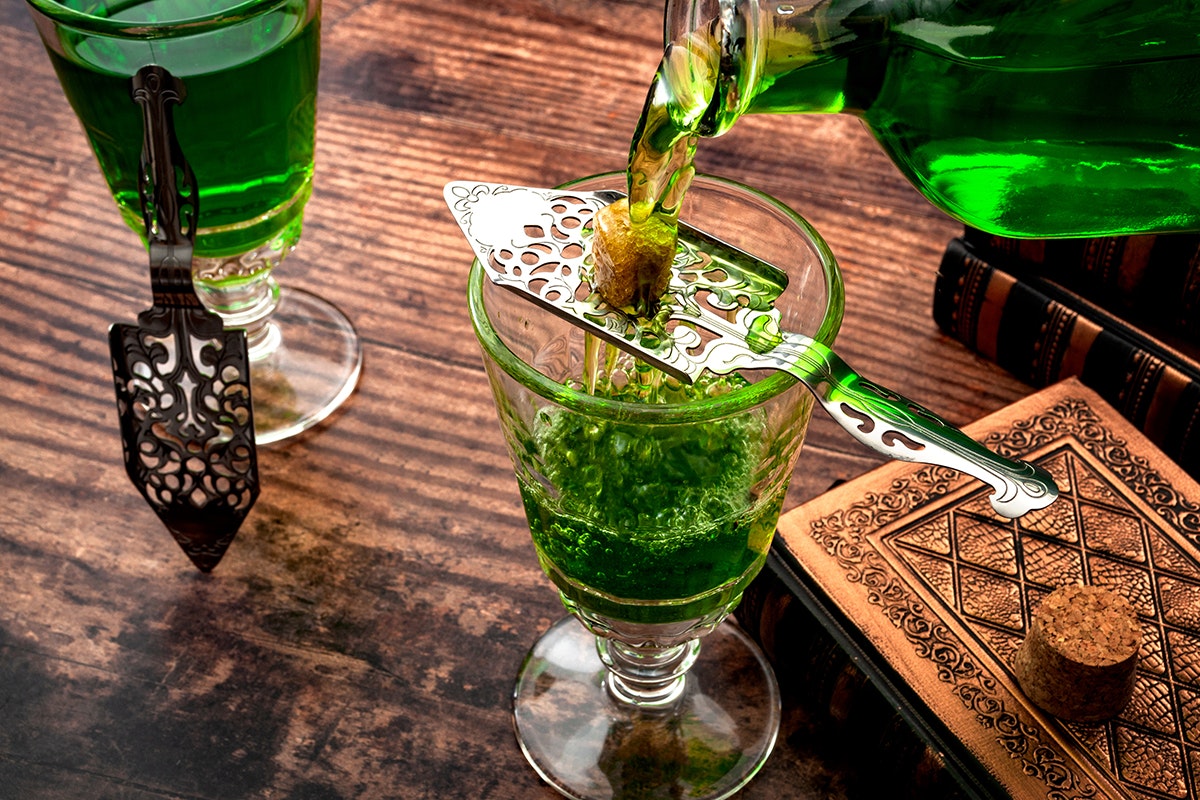
Absinthe, a highly potent alcoholic spirit, has a long and intriguing history. It was once banned in many countries due to its reputation for causing hallucinations and madness, but it has since made a comeback in the world of artisanal spirits. While absinthe is known for its unique flavors and the infamous “green fairy,” it is also worth exploring its nutritional value.
In this article, we will dive into the 15 key nutrition facts of absinthe, providing you with an in-depth understanding of what this mysterious drink contains. From its calorie content to the vitamins and minerals it offers, we will uncover the hidden nutritional benefits of absinthe. So, if you’re curious about the nutritional profile of this enigmatic spirit, grab a glass, and let’s explore the world of absinthe nutrition!
Key Takeaways:
- Absinthe is a strong, herbal spirit with a rich history and complex flavors. Enjoy it responsibly and explore its cultural legacy through art, literature, and cocktails.
- Absinthe’s revival in recent years has led to a diverse range of flavors and styles. Embrace its unique serving ritual and join the passionate community of “absintheurs” responsibly.
Absinthe is a highly alcoholic herbal spirit.
Absinthe is a potent alcoholic beverage distilled with botanicals such as wormwood, anise, and fennel. It is known for its strong flavor and high alcohol content, typically ranging from 55% to 75% ABV.
Absinthe originated in Switzerland in the late 18th century.
The modern version of absinthe has its roots in Switzerland, where it was first commercialized in the late 18th century. It gained popularity among artists and writers in the 19th century, becoming synonymous with bohemian culture.
Traditional absinthe is prepared using a specific ritual.
The traditional way of serving absinthe involves placing a sugar cube on a slotted spoon, which is then positioned on top of a glass filled with a measure of absinthe. Ice-cold water is slowly dripped over the sugar cube, causing it to dissolve and mix with the absinthe, creating the characteristic louche effect.
Wormwood is the key ingredient in absinthe.
Wormwood, scientifically known as Artemisia absinthium, is a bitter herb that gives absinthe its distinctive flavor. It contains a chemical compound called thujone, which was believed to have psychoactive properties, although modern absinthe typically contains only trace amounts of thujone due to regulatory restrictions.
Absinthe was associated with the “Green Fairy” myth.
During the height of its popularity, absinthe was often referred to as the “Green Fairy” due to its vibrant green color and rumored hallucinogenic effects. However, these claims were largely based on misinformation and exaggerated stories.
Absinthe has a complex aromatic profile.
Absinthe exhibits a complex blend of aromas, with hints of anise, fennel, and other botanicals. The distinct aroma is released when absinthe is diluted with water as part of the traditional serving ritual.
Absinthe is traditionally consumed as an aperitif.
In traditional European culture, absinthe is often enjoyed as an aperitif before a meal. Its intense flavors and herbal notes are believed to stimulate the appetite and prepare the palate for the upcoming dining experience.
Absinthe has a storied history involving controversy and prohibition.
Absinthe faced significant scrutiny and was eventually banned in many countries during the early 20th century. Concerns about its potential health risks, coupled with moral panic surrounding its reputed psychoactive effects, led to its prohibition in several jurisdictions.
Absinthe has experienced a revival in recent years.
After years of prohibition, absinthe has made a comeback in the spirits industry. With legal restrictions eased, distillers have been able to recreate traditional recipes and experiment with new flavors, leading to a resurgence in its popularity.
Absinthe is known for its strong alcoholic kick.
Due to its high alcohol content, absinthe is a spirit that should be consumed in moderation. Its potency can vary, but it is generally advised to enjoy it responsibly and appreciate the flavors and aromas in small quantities.
Absinthe has inspired a rich cultural legacy.
Absinthe has seeped into popular culture, inspiring countless works of art, literature, and film. It has been portrayed as a symbol of creativity, rebellion, and bohemianism, capturing the imagination of artists and writers throughout history.
Absinthe can be used as an ingredient in cocktails.
Absinthe’s unique flavor profile makes it a versatile ingredient in cocktails. It is featured in classic drinks such as the Sazerac and the Corpse Reviver, adding depth and complexity to the overall taste.
Absinthe has a loyal following among enthusiasts.
Absinthe enthusiasts, often referred to as “absintheurs,” are passionate about the spirit’s history, production methods, and the intricate details of its serving ritual. They explore different absinthe brands and variations to fully appreciate the nuances of this intriguing beverage.
Absinthe has different variations across regions.
Various countries have their own traditional methods of producing absinthe, resulting in subtle variations in flavor and ingredients. The Swiss, French, and Czech regions each have their own distinct absinthe styles, contributing to the diversity in the absinthe market.
Absinthe should always be enjoyed responsibly.
As with any alcoholic beverage, it is essential to consume absinthe responsibly. It is recommended to drink it in moderation and be aware of its strong effects. Enjoying absinthe as part of a balanced lifestyle ensures a safe and enjoyable experience.
Conclusion
Absinthe is a unique and intriguing alcoholic beverage that has gained popularity in recent years. While it is known for its high alcohol content and the presence of wormwood, there are many other interesting nutrition facts to consider. Absinthe contains calorie, carbohydrate, and sugar content similar to other alcoholic beverages. However, it is also rich in essential oils from wormwood, anise, and other botanicals, which contribute to its distinct flavor profile. The small amounts of vitamins and minerals found in absinthe may provide minor health benefits, but it is important to consume this beverage in moderation. Overall, if you enjoy the complexity and mystique of absinthe, you can savor it knowing that it can be enjoyed responsibly as part of a balanced lifestyle.
FAQs
1. Is absinthe safe to drink?
Absinthe is safe to drink in moderation. However, it is important to note that it has a high alcohol content, so consuming excessive amounts can be harmful.
2. Can absinthe make you hallucinate?
Contrary to popular belief, absinthe does not cause hallucinations. This misconception originated from the belief that wormwood, one of the key ingredients in absinthe, contains a compound called thujone that can cause hallucinations. However, the amount of thujone in modern absinthe is highly regulated and not enough to induce hallucinations.
3. How should absinthe be consumed?
Traditionally, absinthe is consumed by diluting it with water and adding sugar. It is typically served by slowly pouring cold water over a sugar cube placed on a special absinthe spoon, then stirring until the desired level of dilution is achieved. Some also enjoy the ritual of lighting the absinthe on fire before adding water, but this is purely for aesthetic purposes and does not affect the taste or experience.
4. Does absinthe have any health benefits?
Absinthe contains small amounts of vitamins and minerals from botanical ingredients, which may provide minor health benefits. However, the alcohol content in absinthe outweighs any potential benefits, so it is not considered a health drink.
5. Can absinthe be mixed with other beverages?
Yes, absinthe can be mixed with other beverages to create unique cocktails. Popular mixers include soda water, citrus juices, and herbal liqueurs. Experimentation with different flavor combinations can lead to exciting and refreshing drinks.
Was this page helpful?
Our commitment to delivering trustworthy and engaging content is at the heart of what we do. Each fact on our site is contributed by real users like you, bringing a wealth of diverse insights and information. To ensure the highest standards of accuracy and reliability, our dedicated editors meticulously review each submission. This process guarantees that the facts we share are not only fascinating but also credible. Trust in our commitment to quality and authenticity as you explore and learn with us.


